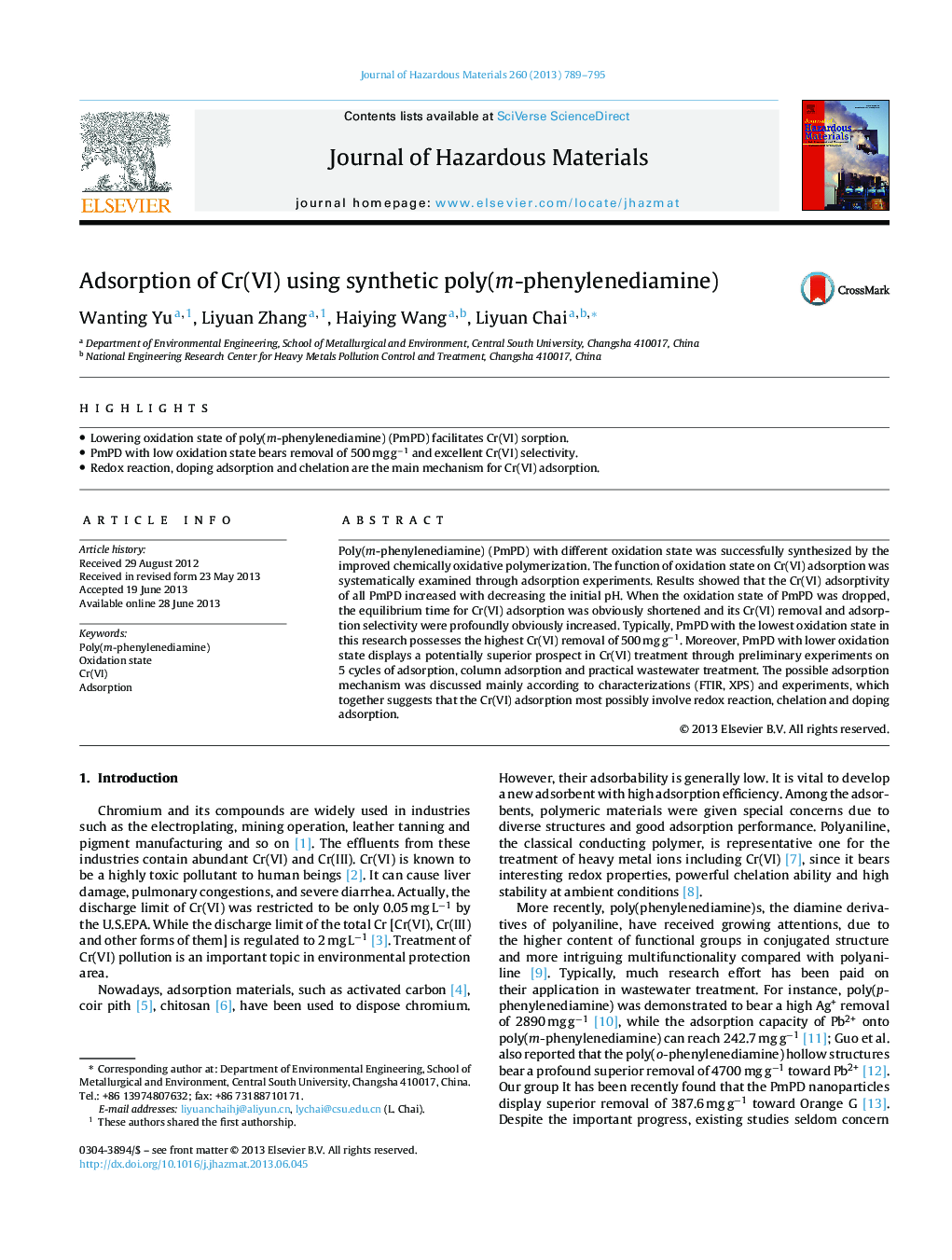| Article ID | Journal | Published Year | Pages | File Type |
|---|---|---|---|---|
| 6972445 | Journal of Hazardous Materials | 2013 | 7 Pages |
Abstract
Poly(m-phenylenediamine) (PmPD) with different oxidation state was successfully synthesized by the improved chemically oxidative polymerization. The function of oxidation state on Cr(VI) adsorption was systematically examined through adsorption experiments. Results showed that the Cr(VI) adsorptivity of all PmPD increased with decreasing the initial pH. When the oxidation state of PmPD was dropped, the equilibrium time for Cr(VI) adsorption was obviously shortened and its Cr(VI) removal and adsorption selectivity were profoundly obviously increased. Typically, PmPD with the lowest oxidation state in this research possesses the highest Cr(VI) removal of 500 mg gâ1. Moreover, PmPD with lower oxidation state displays a potentially superior prospect in Cr(VI) treatment through preliminary experiments on 5 cycles of adsorption, column adsorption and practical wastewater treatment. The possible adsorption mechanism was discussed mainly according to characterizations (FTIR, XPS) and experiments, which together suggests that the Cr(VI) adsorption most possibly involve redox reaction, chelation and doping adsorption.
Related Topics
Physical Sciences and Engineering
Chemical Engineering
Chemical Health and Safety
Authors
Wanting Yu, Liyuan Zhang, Haiying Wang, Liyuan Chai,
